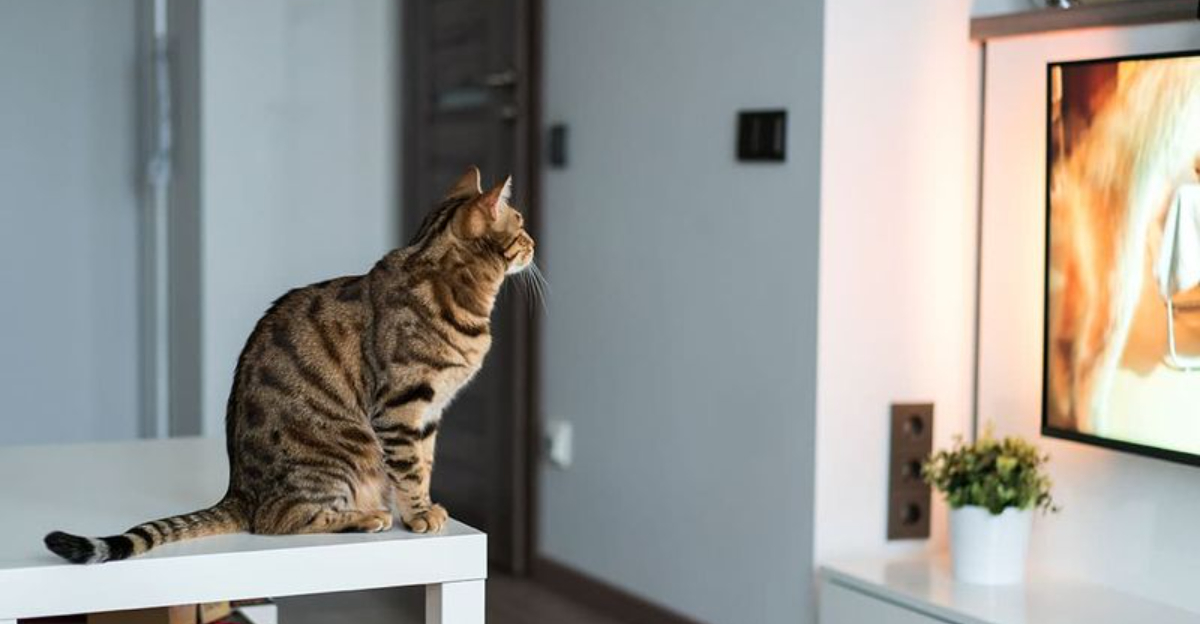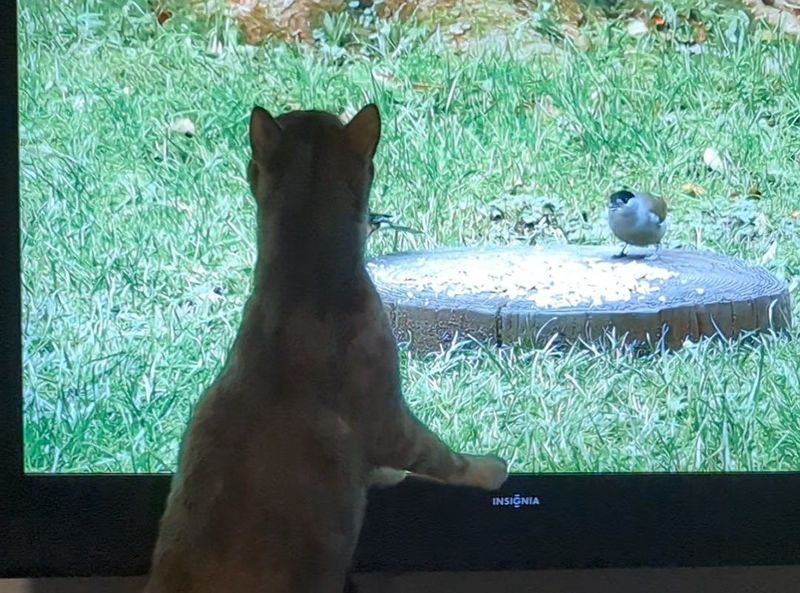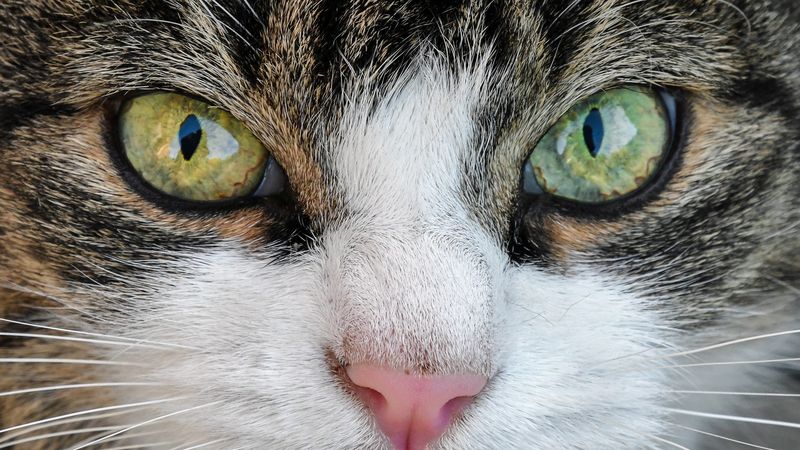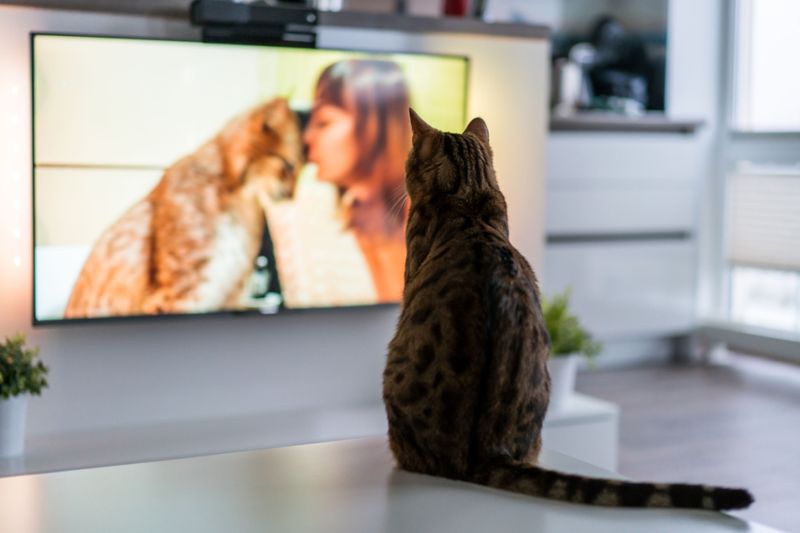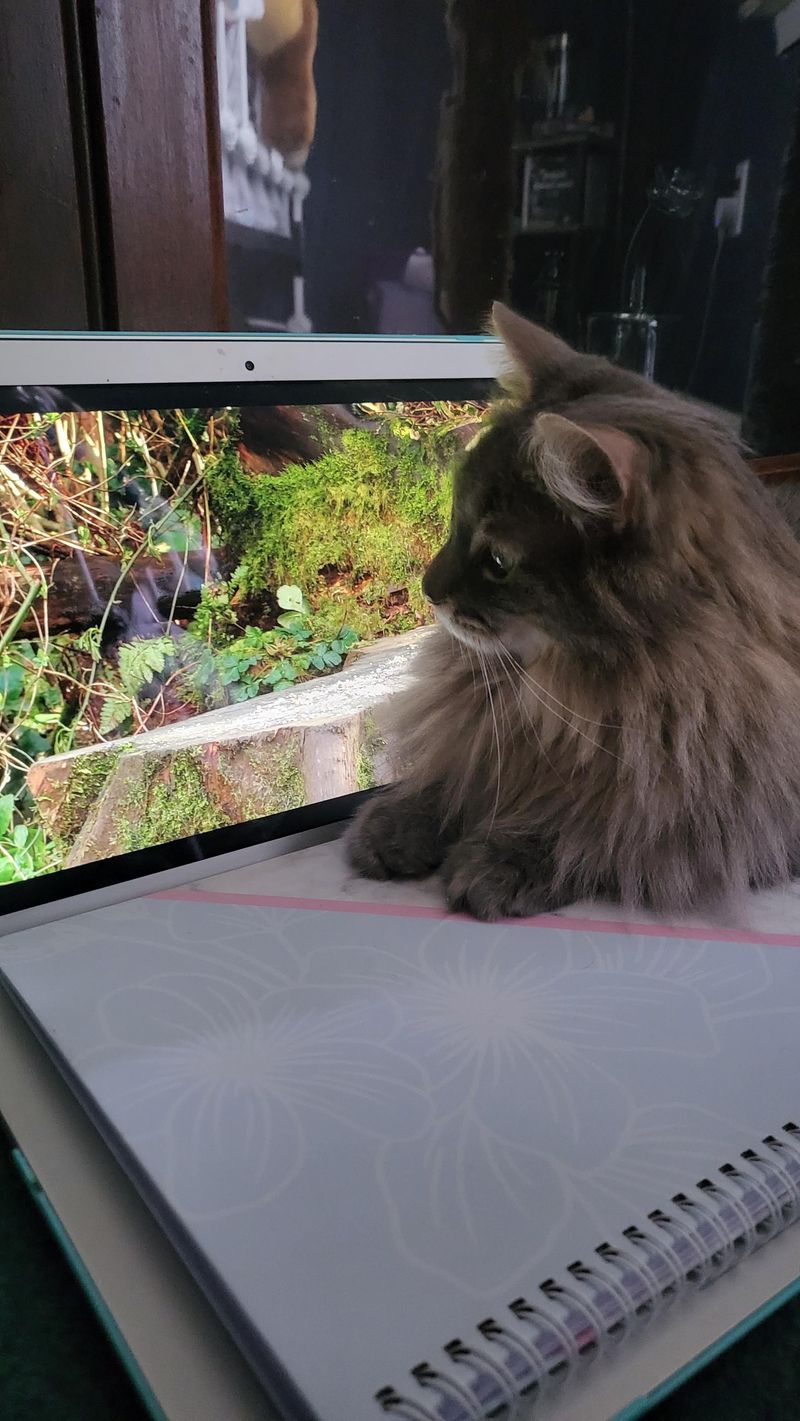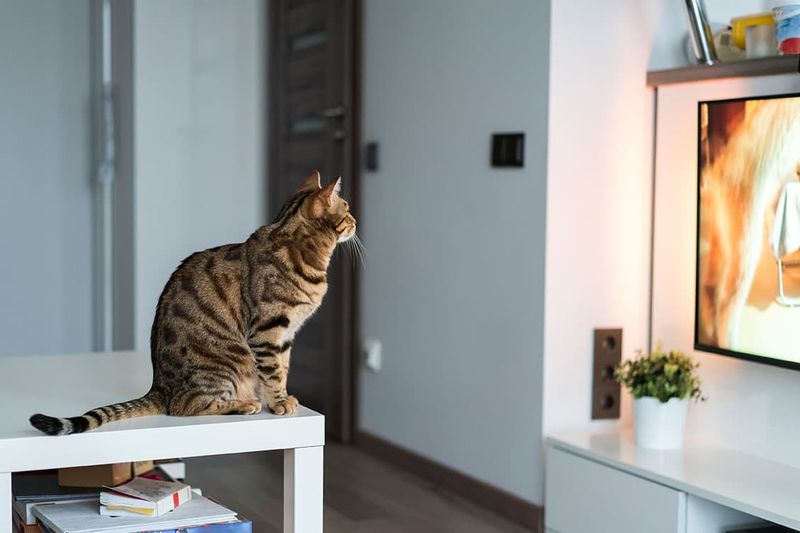📖 Table of Content:
Cats’ interaction with television is as fascinating as it is unique. Their visual and sensory processing is quite different from humans, influencing how they perceive motion and color on screen. While some felines might be captivated by the movement and sounds, others could react with indifference or stress. As a cat owner, understanding your pet’s behavior in response to TV can enhance their viewing experience. Here’s a closer look at what happens when cats watch TV.
Motion Perception in Cats
Have you ever noticed your cat fixated on the TV when something moves quickly? Cats are exceptional hunters, highly skilled in detecting motion. Unlike humans, who see smooth movement at 20 frames per second (fps), cats need a higher frame rate of about 100 fps to perceive similar fluidity. This means that while we might enjoy a seamless video, a cat could perceive it as a series of flickering images, especially if the frame rate is low. Their keen ability to detect movement is a trait honed for hunting. This sensitivity can make certain TV content, like fast-moving wildlife, especially appealing to them. However, if the motion isn’t smooth, it might not hold their interest for long. Understanding this helps in selecting the right kind of content to engage your feline friend.
Cats and Color Vision
Cats see the world in a palette different from ours. Known as dichromats, they have two types of cone cells in their eyes, compared to humans’ three. This means they perceive a more limited range of colors, primarily blues and greens, while reds and certain shades are indistinguishable. This unique color vision affects how they watch TV, as colors that might seem vibrant to us are muted or even invisible to them. When you’re choosing programs for your cat, understanding this limitation can help in selecting shows with contrasting hues that are more likely to catch their eye. Even though they don’t see the world as vividly as we do, the appeal of motion and sound can still captivate their attention.
Behavioral Reactions to TV
Noticed your cat getting playful or even aggressive with the TV? Cats often respond to TV content that mimics their natural prey, such as birds or small animals. This triggers their hunting instincts, leading to stalking, pouncing, or pawing at the screen. While this can be entertaining, not all cats enjoy the experience. Some might feel stressed, indicated by behaviors like excessive vocalization or hiding. It’s crucial to observe your cat’s reactions and adjust the content accordingly. Positive engagement means your feline is entertained, but if stress signals appear, it’s best to switch off the TV or change the channel. Understanding these reactions ensures a safe and enjoyable viewing experience for your pet.
Choosing Cat-Friendly Programs
Selecting the right TV program can make a big difference in your cat’s viewing pleasure. Shows featuring natural movements, like birds or small mammals, tend to captivate cats due to their instinctual appeal. Nature documentaries often provide this type of content, aligning with a cat’s predatory instincts. It’s not just the visuals; sounds play a role too. Programs with authentic nature sounds can enhance their engagement. However, moderation is key, as TV shouldn’t replace physical play. Ensure your cat gets ample opportunity for exercise and interaction, maintaining a balance between mental and physical enrichment. This holistic approach contributes to a happier and healthier feline friend.
Safety Considerations for Cat Viewers
While TV can be captivating for cats, it’s important to ensure their safety. Cats might become overly enthusiastic and try to interact physically with the screen. This could lead to accidents, such as the TV toppling over or the cat getting hurt. Placing the TV securely and maintaining a safe distance can prevent such mishaps. Additionally, monitor your cat’s behavior for any signs of distress or over-stimulation. If your feline friend seems agitated or too fixated on the screen, it might be time to turn off the TV. Keeping these safety tips in mind allows your cat to enjoy TV without any risks, ensuring both entertainment and safety in your home.
